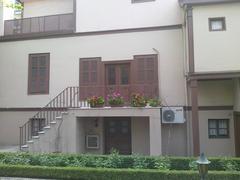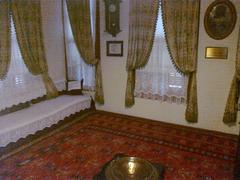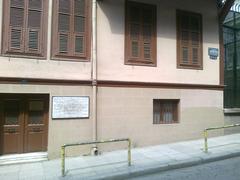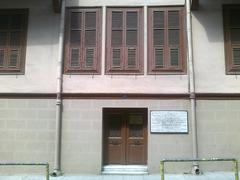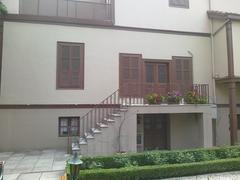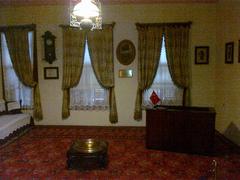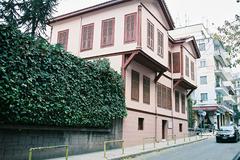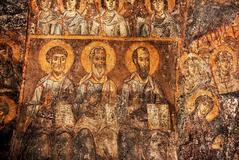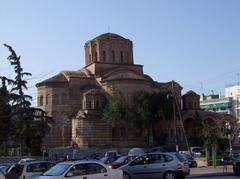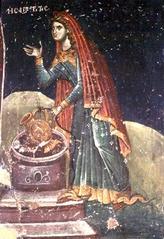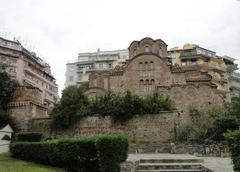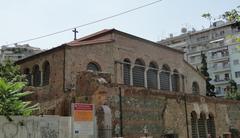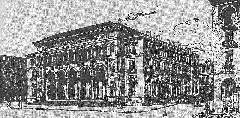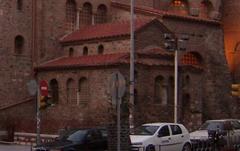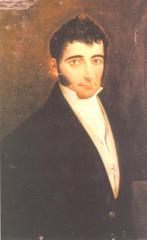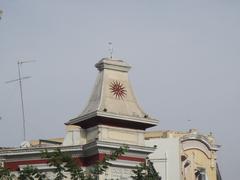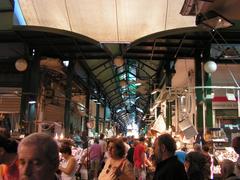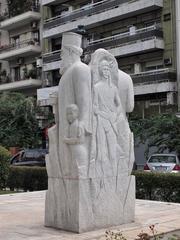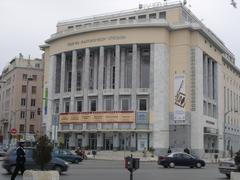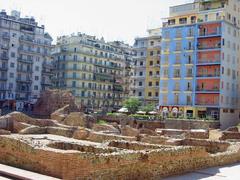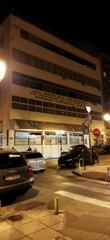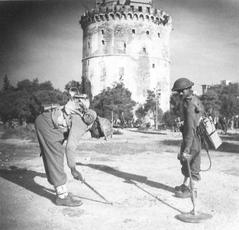
Atatürk Museum in Thessaloniki: Visiting Hours, Tickets, and History
Date: 18/07/2024
Introduction
The Atatürk Museum in Thessaloniki, Greece, is a significant historical and cultural site that offers visitors an intimate look into the early life of Mustafa Kemal Atatürk, the founder and first president of the Republic of Turkey. Housed in the building where Atatürk was born in 1881, the museum serves as a bridge between the past and present, highlighting the rich history and multicultural heritage of Thessaloniki during the late Ottoman period. This comprehensive guide aims to provide detailed information about the museum’s history, its transformation into a site of national importance, and practical details for potential visitors. By delving into the museum’s exhibits and the broader historical context, visitors can gain a deeper appreciation for Atatürk’s enduring legacy and the shared heritage between Turkey and Greece. (Hellenic Ministry of Culture and Sports) (OASTH)
Table of Contents
- Introduction
- History and Significance of the Atatürk Museum
- Visiting the Atatürk Museum
- Symbol of Turkish-Greek Relations
- A Place of Remembrance and Inspiration
- A Window into Ottoman Thessaloniki
- Continued Relevance and Preservation
- FAQ
- Conclusion
- References
History and Significance of the Atatürk Museum
The Atatürk Museum holds immense historical and cultural significance, standing as a testament to the life and legacy of Mustafa Kemal Atatürk. The museum is housed in the very building where Atatürk was born in 1881, adding a deeply personal layer to its historical importance.
The Birthplace of a Leader
The three-story building, constructed in the late 19th century, reflects the typical Ottoman-era architecture prevalent in Thessaloniki at the time. Before becoming a museum, the house served as the Turkish Consulate in Thessaloniki until 1937. The building itself, with its pink facade and ornate details, stands as a tangible link to the city’s Ottoman past and the multicultural fabric that shaped Atatürk’s early life.
Transformation into a Museum
Recognizing the historical importance of Atatürk’s birthplace, the Turkish government decided to transform it into a museum. In 1953, on the 10th anniversary of Atatürk’s death, the house was officially inaugurated as the Atatürk Museum. This act solidified the building’s status as a place of national pilgrimage for Turks and a significant historical landmark in Thessaloniki.
A Glimpse into Atatürk’s Early Life
The museum offers a captivating journey through Atatürk’s early life, showcasing the environment that nurtured his formative years. Visitors can explore rooms furnished with period furniture and personal belongings, providing an intimate glimpse into the daily life of the Atatürk family. Photographs, documents, and personal artifacts further illuminate Atatürk’s childhood, education, and the sociopolitical context of his early years.
Visiting the Atatürk Museum
Visiting Hours and Tickets
The Atatürk Museum is open to visitors from Tuesday to Sunday, 10:00 AM to 5:00 PM. It is closed on Mondays and public holidays. Admission is free, making it accessible to all who wish to explore this significant site.
Travel Tips and Nearby Attractions
The museum is located in the heart of Thessaloniki, making it easily accessible by public transportation or on foot. Nearby attractions include the White Tower, the Archaeological Museum of Thessaloniki, and the Rotunda, allowing visitors to immerse themselves in the rich history of the city.
Symbol of Turkish-Greek Relations
Beyond its historical significance, the Atatürk Museum also serves as a symbol of the complex and evolving relationship between Turkey and Greece. Despite historical tensions, the preservation of Atatürk’s birthplace in Thessaloniki reflects a shared heritage and a commitment to cross-cultural understanding. The museum stands as a testament to the enduring connections between the two nations, fostering dialogue and promoting a shared appreciation for history.
A Place of Remembrance and Inspiration
For many Turks, the Atatürk Museum is more than just a historical site; it is a place of pilgrimage and national pride. Visiting the birthplace of the man who revolutionized Turkey and shaped its modern identity evokes strong emotions and a sense of connection to their heritage. The museum serves as a reminder of Atatürk’s enduring legacy, inspiring future generations with his vision of a modern, secular, and progressive Turkey.
A Window into Ottoman Thessaloniki
The museum also provides valuable insights into the social and cultural landscape of late 19th-century Thessaloniki, a vibrant multicultural city under Ottoman rule. The architecture of the house, the furnishings, and the artifacts on display offer a glimpse into the daily life of a middle-class Ottoman family during that era. This aspect of the museum adds another layer of historical richness, allowing visitors to connect with the city’s diverse past.
Continued Relevance and Preservation
The Atatürk Museum remains a popular destination for both Turkish and international tourists, attracting visitors interested in history, culture, and the life of one of the most influential figures of the 20th century. The Turkish and Greek governments continue to cooperate in the museum’s preservation, ensuring that future generations can learn from and be inspired by the life and legacy of Mustafa Kemal Atatürk.
FAQ
Q: What are the visiting hours for the Atatürk Museum?
A: The museum is open from Tuesday to Sunday, 10:00 AM to 5:00 PM. It is closed on Mondays and public holidays.
Q: Is there an admission fee for the Atatürk Museum?
A: No, admission to the Atatürk Museum is free.
Q: What other attractions are nearby the Atatürk Museum?
A: Nearby attractions include the White Tower, the Archaeological Museum of Thessaloniki, and the Rotunda.
Conclusion
The Atatürk Museum in Thessaloniki stands as a testament to the profound historical and cultural connections between Turkey and Greece. By preserving the birthplace of Mustafa Kemal Atatürk, the museum not only honors the legacy of one of the 20th century’s most influential leaders but also fosters a deeper understanding of the complex historical narratives that have shaped the region. Whether you are a history enthusiast, a student of Ottoman architecture, or someone interested in the life of Atatürk, the museum offers a wealth of information and inspiration. The continued cooperation between the Turkish and Greek governments in preserving this site underscores its significance as a symbol of cross-cultural dialogue and mutual respect. Plan your visit to the Atatürk Museum to explore the rich history that shaped one of the most influential figures of modern Turkey. (OASTH) (Thessaloniki Metro)
